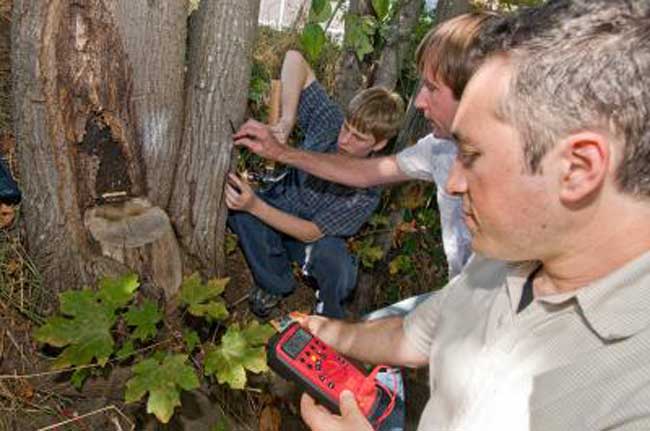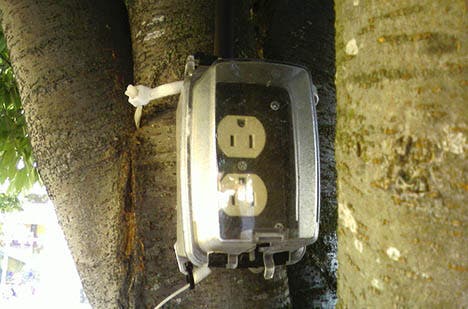
Researchers have figured out a way to ‘plug’ into electrical power generated by trees. Although this isn’t a practical way to power up electric circuits, it still offers intriguing insights into the biochemical processes in trees — and maybe about electricity itself.
Tree electricity is not like potato electricity
It has been a well known fact for years that plants can conduct electricity (humans can too, take care kids). Now scientists from MIT found out just how much they can pack up: 200 millivolts of electrical power (=0.2 volts). To put it into perspective, that’s 25 times less than the 5 volts that power radios and other small devices.
The lemon and potato battery experiments are already notorious, but this is something else. The mechanism through which researchers can harvest electricity from trees is completely different.
“We specifically didn’t want to confuse this effect with the potato effect, so we used the same metal for both electrodes,” said Babak Parviz, a professor of electrical engineering at Washington University and co-author of the study.
After spending months surveying trees and analyzing their current flow, Parviz and colleagues found that big leaf maple trees can generate generated a steady voltage.
However, in order to become practical, a much higher voltage is necessary. So researchers built a boost converter capable of picking up really little voltages and storing them and then producing a greater output.
With this device, researchers were able to generate an output voltage of 1.1 volts. Already, this is enough to power some sensors. For instance, some environmental sensors that track temperature or humidity.
Essentially, the tree would be powering the sensors with its own electricity.
Electricity from trees
The full study will be published in the upcoming issue of the Institute of Electrical and Electronics Engineers’ Transactions on Nanotechnology. It’s not really as practical as other options, but it could prove to be quite significant, especially for different types of sensors.
“Normal electronics are not going to run on the types of voltages and currents that we get out of a tree.” Parviz said. “As new generations of technology come online, I think it’s warranted to look back at what’s doable or what’s not doable in terms of a power source.”
But this isn’t the only time researchers drew electricity from trees.
Fabian Meder, Barbara Mazzolai, and their coworkers at Istituto Italiano di Tecnologia in Pontedera (Pisa, Italy), also harvested electricity. This team showed that in some instances, plants can generate, by a single leaf, more than 150 Volts when you touch them.
Researchers also describe how this effect can be used to transform wind into electricity through plants. Yet again, this isn’t going to be significant in the grand scheme of things, for now, but it shows how plants and electricity interact together in unforeseen ways.
Who knows, maybe in the future, we can even find a way to use this. But for now, this is not meant to be used by humans. In fact, researchers suspect it can be used as a tool to look at a tree’s health and its biology.
“It’s not exactly established where these voltages come from. But there seems to be some signaling in trees, similar to what happens in the human body but with slower speed,” Parviz said. “I’m interested in applying our results as a way of investigating what the tree is doing. When you go to the doctor, the first thing that they measure is your pulse. We don’t really have something similar for trees.”










